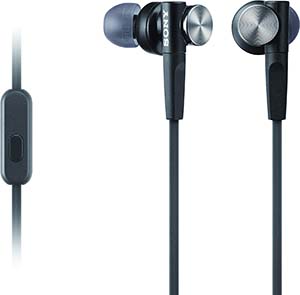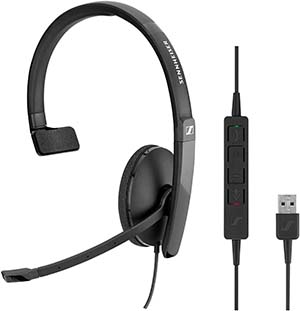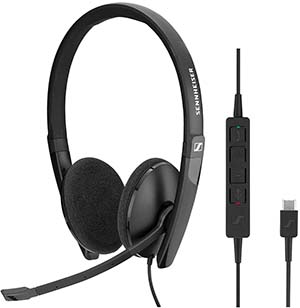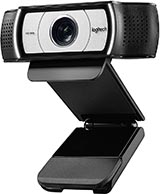Podcast: Play in new window | Download
Subscribe: Apple Podcasts | Spotify | TuneIn | RSS
Since we can’t leave the house, we discuss what it takes to effectively work remote while Allen’s frail body requires an ergonomic keyboard, Joe finally takes a passionate stance, and Michael tells them why they’re wrong.
Reading these show notes via your podcast player? You can find this episode’s full show notes at https://www.codingblocks.net/episode129 and be a part of the conversation.
Sponsors
- Datadog.com/codingblocks – Sign up today for a free 14 day trial and get a free Datadog t-shirt after install the agent.
- University of California, Irvine Division of Continuing Education – One of the top 50 nationally ranked universities, UCI offers over 80 certificates and specialized programs designed for working professionals. Spring registration is NOW OPEN! Sign up and reserve your seat today!
Survey Says
News
- Thank you, krauseling, for the latest iTunes review.
- TechSmith is offering Snagit and Video Review for free through June 2020. (TechSmith)
How to WFH
The Essentials
- First and foremost, get a quality internet connection.
- For video calls, favor lower latency over higher bandwidth.
- Turn your camera on.
- Use a comfortable headset with a good microphone
- Wired headphones are definitely the way to go. Better audio quality, fewer problems, and no battery life issues to worry about.
- Mute unless talking.
- Not all video sharing is equal. Know which to use when screen sharing.
- Screen sharing in Zoom is much better than in Hangouts. The text on the screen is crisp and readable and the screen sharing session is responsive.
- Communicate when you will be away during normal hours.
- Make sure your IM application status and/or availability is accurate.
Sound Good
| Price | Description | |
| $30 | Sony MDRXB50AP Extra Bass Earbuds Headset with mic (Amazon) |  |
| $149 | SteelSeries Arctis 7 Gaming Headphones (Amazon) |  |
| $18 | Apple EarPods with 3.5mm Headphone Plug (Amazon) |  |
Avoid these headphones
| Description | Price | |
 | Sennheiser SC 130 USB Single Sided Headset (Amazon) | NA |
 | Sennheiser SC 160 USB Double-Sided Headset (Amazon) | $65 |
Look Good, too
| Price | Description | |
| NA | Logitech c930e WebCam (Amazon) |  |
Digging Deeper
- Don’t be afraid to spend time on calls just chatting about non work related stuff.
- Working from home means there’s little opportunity to connect personally and that is sorely needed when working from home. Taking time to chat will help to keep the team connected.
- Keep it light and have fun!
- Be available and over communicate.
- During business hours make sure you’re available. That doesn’t mean you need to be in front of your computer constantly, but it does mean to make sure you can be reached via phone, email, or chat and can participate when needed.
- Working from home also means it is super important to communicate status and make sure people feel like progress is being made.
- Also, if you need to be offline for any reason, send up a flare, don’t just disappear.
- Make sure your chat application status is really your status. People will rely on you showing “Active” meaning that you are available. Don’t game your status. Take a break if you need to but if you aren’t available, don’t show available. Also, if you don’t show “Active” many will assume that you aren’t available or online.
- We’ve also found that sometimes it is good to show “offline” or “unavailable” to give us a chance to get into a flow and get things done, so don’t be afraid to do that. Having this be a “known agreement” will signal to others that they may just want to send you an e-mail or schedule a conference later.
- If something is urgent in email, make sure to send the subject with a prefix of “URGENT:”
- But beware the an “urgent” email doesn’t mean you’ll get an instant reply. If you need an answer right now, consider a phone call.
- An “urgent” email should be treated as “as soon as you read this”, knowing that it might not be read for a while.
- Make sure your calendar is up to date. If you are busy or out of the office (OOO) then make sure you schedule that in your calendar so that people will know when they can meet with you.
- Along with the above, when scheduling meetings, check the availability of your attendees.
- Be flexible.
- This goes with things mentioned above. As a manager especially, you need to be flexible and recognize that working from home sometimes means people need to be away for periods of time for personal reasons. Don’t sweat that unless these people aren’t delivering per the next point.
- Favor shorter milestones or deliverables and an iterative approach.
- This helps keep people focused and results oriented. Science projects are easy to squash if you define short milestones that provide quick wins on the way to a longer term goal.
- We use the term “fail fast” a lot where we break projects into smaller bits and try to attack what’s scariest first in an effort to “fail fast” and change course.
- We use JIRA and work in 2 week sprints.
- Define work in small enough increments. If something exceeds two weeks, it means it needs to be reviewed and refined into smaller work streams. Spend the time to think through it.
- This helps keep people focused and results oriented. Science projects are easy to squash if you define short milestones that provide quick wins on the way to a longer term goal.
- Require estimates on work items to help keep thing on track.
- Allow and encourage people to work in groups or teams if appropriate, for things like:
- Brainstorming sessions.
- Mini-scrums that are feature or project based.
- Pair programming. Use of the proper video application for screen sharing is important here.
- Conference etiquette:
- Mute. If you’re not talking, mute.
- Lots of participants? Mute.
- Smaller/Team meeting? Up to you. But probably best to mute.
- Use a microphone and verify people hear you okay. Don’t forgo a real headset or microphone and instead try to use your internal laptop microphone and speakers. You will either be super loud with background noise, for example people just hear you typing the whole time or hear your fan running, or people won’t hear you at all.
- When you start presenting, it is a good practice to ask “can you see my screen?”
- Give others opportunities to talk and if someone hasn’t said anything, mention it and ask for their feedback especially if you think their opinion is important on the subject at hand.
- Mute. If you’re not talking, mute.
- Use a tool to help you focus.
- It is easy to get distracted by any number of things.
- A technique that works well for some is the Pomodoro Technique. There’s also nifty applications and timers that you can use to reinforce it.
- Music may not be the answer.
- For some people just putting on noise-cancelling headphones helps with external noise (kids, TV, etc.)
- Choose the right desktop sharing tool when needed.
- We’ve found that Hangouts is a great tool to meet quickly and while it does provide for screen sharing, the video quality isn’t great. It does not allow people who are viewing your screen to zoom in and if you have a very high resolution monitor, people may find it hard to read/see it.
- While Webex is a little more challenging to use, it does provide the ability for others to zoom in when you share, and the shared screens are more clear than Hangouts.
- Additionally, Webex allows you to view all participants in one gallery view, thus reinforcing team cohesion.
- That said though, we’ve found Zoom to be far superior to it’s competitors.
- Develop a routine.
- Get up and start working at roughly the same time if you can.
- Shower and dress as if you’re going out for errands at least.
- If possible, have a dedicated workspace.
- Most importantly, make sure you stop work at some point and just be home. If at all possible, coupled with the dedicated workspace tip, if you can have a physical barrier, such as a door, use it, i.e close the door and “be home” and not “at work”.
- It’s hard not to overeat at first, but try to avoid the pantry that is probably really close to your workspace.
- Try to get out of the house for exercise or errands in the middle of day to break things up.
- Working from home is much more sedentary than working in an office. Make it a point to get up from your desk and walk around, check the mail, do whatever you can to stretch your legs.
Resources We Like
- Zoom Training Resources (Zoom)
- Slack. Have we mentioned, we have a Slack?
- Microsoft Teams
- Pomodoro Technique (Wikipedia)
- Does music help us work better? It depends (BBC)
- GitLab’s Guide to All-Remote (about.gitlab.com)
- How To Work From Home (haacked.com)
- How to Lead From Home (haacked.com)
- Make “work from home” work for you (blog.google)
- Working from home tips from our experienced remote employees (stackoverflow.blog)
- Geographically Distributed Teams (haacked.com)
- Spouses Share the Hilarious Things They’ve Learned About Their Partner Wo5rking from Home (WorkingMother.com)
- Here Are Some Tweets You’ll Enjoy If You’re Currently Stuck Working From Home (BuzzFeed)
- 18 Jokes About Working From Home That Are Equal Parts Hilarious And Accurate (BuzzFeed)
Tip of the Week
- Unity Learn is free for 3 months! (learn.unity.com)
- Use GitHub Learning Lab to grow your skills (lab.github.com)
- VS Code Remote Development allows you to use a container, remote machine, or WSL as a full-featured development environment. (code.visualstudio.com)
- You’ll need the Remote Development extension pack from the marketplace.
Amateur tip: need to kick a build? Gonna squash anyway? Use –allow-empty to do a commit with no files added or actual changes. pic.twitter.com/3P0Twdbast
— Nick Craver (@Nick_Craver) March 21, 2020
Need to take a break from Netflix before you binge-watch the entire library? Introducing our brand new concert series: #MetallicaMondays, debuting tonight on our YouTube channel and on Facebook!
— Metallica (@Metallica) March 23, 2020
Tune in at 8 PM EDT to watch Metallica: Live at Slane Castle – June 8, 2019! pic.twitter.com/91Eymjx2jr











